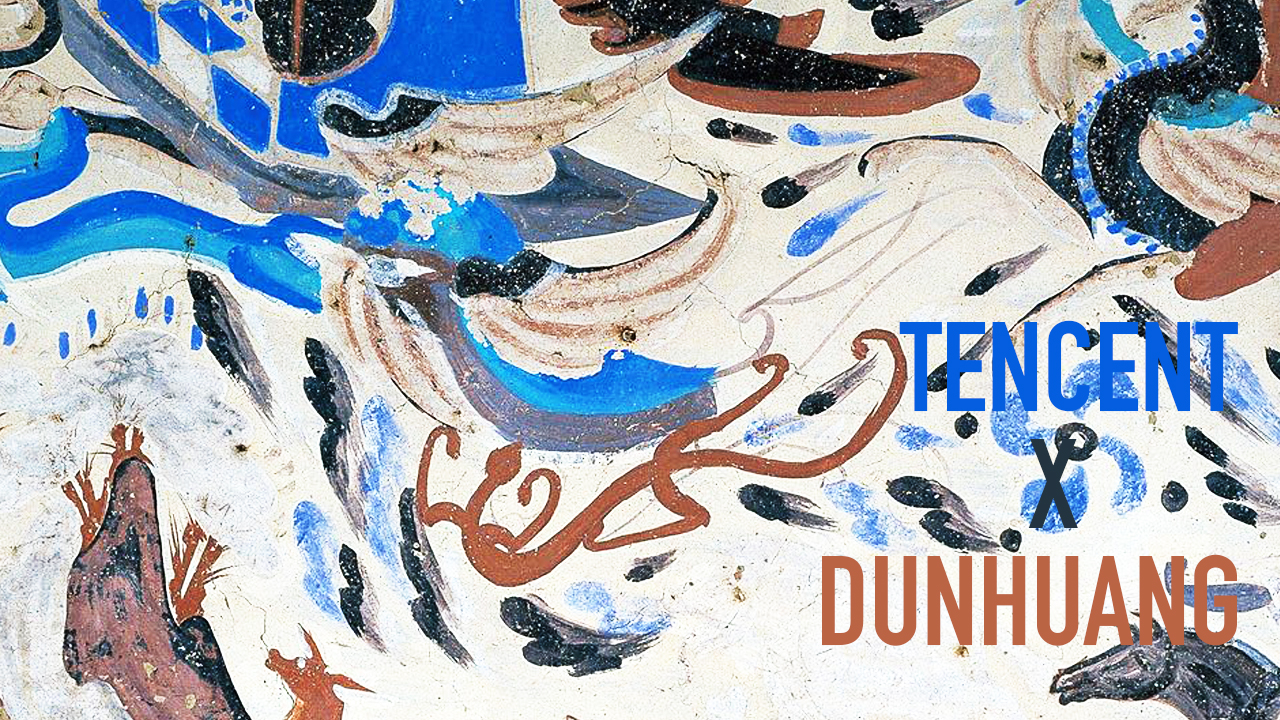This article originally appeared on Content Commerce Insider, our sister site.
In early August, Tencent’s social mobile platform QQ got in on the trend for traditional Chinese hanfu attire with a virtual collection of clothing and accessories for its “QQ Centimeter Show” VR game, allowing users to personalize avatars and send custom stickers, story cards, and gifts.
The styles were modeled after that of the famous Tang Dynasty mural “Flying Flowers” (飞天撒花), located inside the Dunhuang Mogao Grottoes, and was designed in collaboration with the Dunhuang Research Institute.
To promote the project and help users better understand the cultural significance of the new outfits, QQ also released a short documentary, “The Flowing Stream” (川流不息) in collaboration with the Dunhuang Museum.
“The Flowing Stream” opens with breathtaking views of the northwest Chinese landscape: a vast desert, winding river, and the silhouette of a caravan. In the midst of all of this stands the Mogao Grottoes, a thousand-year-old collection of caves that are home to more than 47,000 murals and statues.
Fast-forwarding to present-day Shenzhen, QQ designer Chen Qilin discusses the “Flying Flowers” collection from her office at Tencent headquarters. Challenged by the difficult task of harmonizing traditional and modern aspects of Chinese culture, the QQ product team travelled to Dunhuang to study its ancient culture and murals up close, and the resulting designs pay homage to Tang Dynasty fashion with bright colors and wavy, continuous patterns.
The virtual fashion collection and film project is not the first instance of collaboration between Tencent and the Dunhuang Research Institute. In April, Tencent Animation released a short film series ”Traveling in Dunhuang” (云游敦煌) which interpreted the dances and legends depicted in the Mogao murals for a modern audience. Tencent successfully employed the murals to create a sense of cultural identity that supports its brand image as a pillar of modern-day Chinese culture.
The Dunhuang Research Institute has also been one of the most active cultural collaborators in China today, working with a number of tech firms to disseminate its valuable IP to a wider audience in creative ways — a tactic that has become critical for arts institutions shuttered or facing drops in attendance due to the coronavirus. Earlier this year, e-commerce giant Pinduoduo created a line of real-life hanfu dresses that made it possible for buyers to wear the styles seen on the Dunhuang’s murals.
Huawei loaned its AI technology to the development of the Digital Dunhuang project, which allows visitors to see the detailed contents of the Dunhuang murals through their Huawei mobile phones. In such cases, the duality of technology and culture can entice customers with the appeal of “new” while connecting the brand to the longstanding heritage of China’s past.



